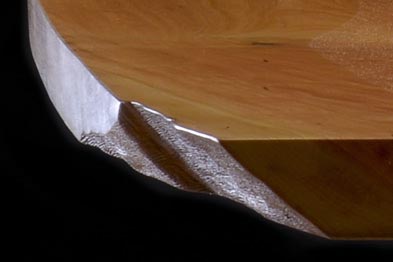After an Internet search, I think this quote is a variant of a motto ascribed to Hippocrates, ars longa vita brevis, which says essentially the same thing. The evolution in meaning from the Latin ars to our modern word art is interesting; for the Romans it seems to have meant primarily the skill associated with a craft or the art of a profession, so in Hippocrates’s motto it would be the art or science of medicine. At any rate it seems to apply to what I do, and I guess that’s why I put it up on the wall. Lately this quote has started popping up in semi-hidden spots on my furniture, engraved by steel stamp.
Our word perfect, I found out recently, comes from the past participle of a Latin verb usually translated as “do thoroughly.” Thinking of our word that way, rather than as an abstract ideal, is strangely comforting; it makes perfection seem like a manageable goal, a matter of doing thorough work, which is under one’s control to a certain extent. The Romans were more down-to-earth than we modern people, who have discovered the need to distinguish perfection from thoroughness and art from skill.
I myself have an ambivalent attitude toward skill. Skill alone is lifeless; there must be a fresh application of that skill to an interesting situation. The things I find visually arresting often involve what used to be considered defects. Most people nowadays think that knots and irregular natural edges are attractive. I have always felt that way, and actually I think many people thirty years ago would have agreed that knots were interesting, just not what they wanted in their offices or living rooms. There has been a shift in popular tastes in furniture, which is probably my biggest discovery since returning to full-time woodworking five years ago. People are more open to stylistic discontinuities, especially ones that remind them of the actual trees that their furniture is from. Here is a detail of a recent piece, with a waney board edge incorporated into a slightly curved table edge.



0 Comments